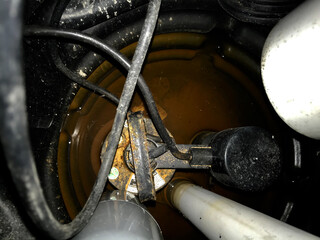What You Need to Know About Water Damage Mitigation
In the event of a flood or a leaky roof, one of the most important things to do is to learn about Water Damage Mitigation. This is important because water damage can cause a great deal of loss to property. If water is allowed to stay in a structure for a prolonged period, wood can rot, bacteria can grow, and steel and composite woods may swell. Moreover, materials such as composite woods or carpeting can delaminate.

Calling an insurance company immediately is a good idea if your property is damaged by water. The insurance company may cover expenses for temporary lodging and water damage repairs. However, if you have significant water damage to your home, you may have to cover the cost yourself. If your insurance doesn’t cover flood damage, it is best to contact a professional Water Damage Mitigation specializing in flood mitigation. They can help you navigate the entire process, from start to finish.
Water mitigation is an important step in the recovery process after a disaster. It involves cleaning, sanitizing, dehumidifying, and drying the affected areas. In addition, the process can help prevent the damage from getting worse. As the water mitigation process is multi-step, it is imperative to have a plan before starting the restoration process. Depending on the severity of the damage, the process may include the following.
After assessing the damage, the mitigation technicians will need to remove the water. They may use a large truck or a portable underwater sump pump to remove the water. Depending on the amount of water, the technicians may use a trash pump to remove debris and mud. If the water damage is extensive, the mitigation workers may need to work in hazardous conditions. They may need to wear specialized equipment to avoid exposure to harmful contaminants.
Installing a leak detection system is crucial, particularly for properties with high exposure to loss. An installed water detector can alert the property owner to a water leak in time to act quickly and prevent further damage. Even a one-inch crack can release the equivalent of a 50-gallon water heater in as little as six minutes. A properly placed water detector will allow an emergency crew to do the necessary cleanup without waiting until the water receded.
Water damage has many potential causes. These can include natural or man-made sources. Storms, faulty plumbing and appliances, and miscellaneous mishaps can all result in water damage. Even toilet overflows can cause damage. Natural water damage may also come from outside the home and seep into the house’s foundation. In addition to being a safety risk, water damage can also cause health problems. For this reason, water damage mitigation is essential to protect property and its contents.
Experts in water mitigation use commercial-grade equipment, including dehumidifiers, air scrubbers, and air movers, to help the property dry up quickly. Once the water has been removed, the drying process can begin. After the damage mitigation process is complete, a team of specialists will apply a tarp over the home to prevent further damage from wild animals. They will also board up windows to prevent further damage.
In addition to water mitigation, there are other water damage repair methods. Many homeowners can begin the process themselves before contacting professionals. These professionals use specialized equipment and techniques to clean up standing water, dry up damaged areas, and clean up the messes left behind. Water mitigation can be a great way to get your home back to its pre-flood state. It is also a great way to reduce the amount of water that enters your home.
Water mitigation techniques vary depending on the type of water that entered the property. Clean water comes from a plumbing supply line, and is usually free of contaminants. However, gray water, which includes wastewater from a backed-up sump pump, ruptured disposal lines, and leaking washing machine hoses, poses a greater challenge. And of course, there is Category 3 water, which can contain toxic chemicals and pathogens. This type of water is a serious emergency requiring specialized equipment and training.
Water damage mitigation should be done as soon as possible after the damage is done. Many insurance policies cover the cost of water mitigation, but policyholders must act quickly to prevent further loss. While mold growth is certainly a concern, it shouldn’t be the primary concern regarding water damage mitigation. Most people have misconceptions about water damage and mold. It’s best to get professional help as soon as possible, so that you can minimize the damage and the risk of mold growth.
